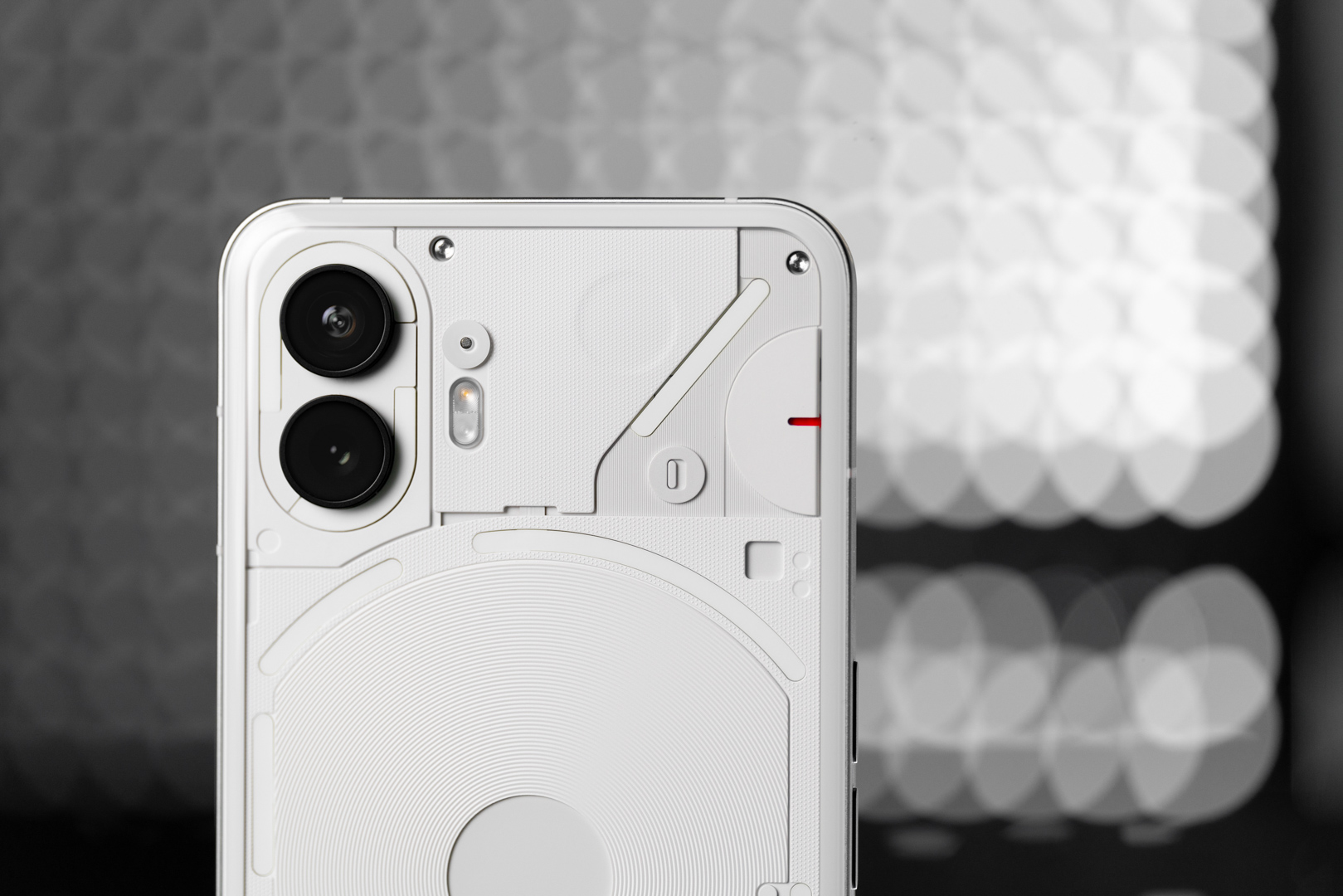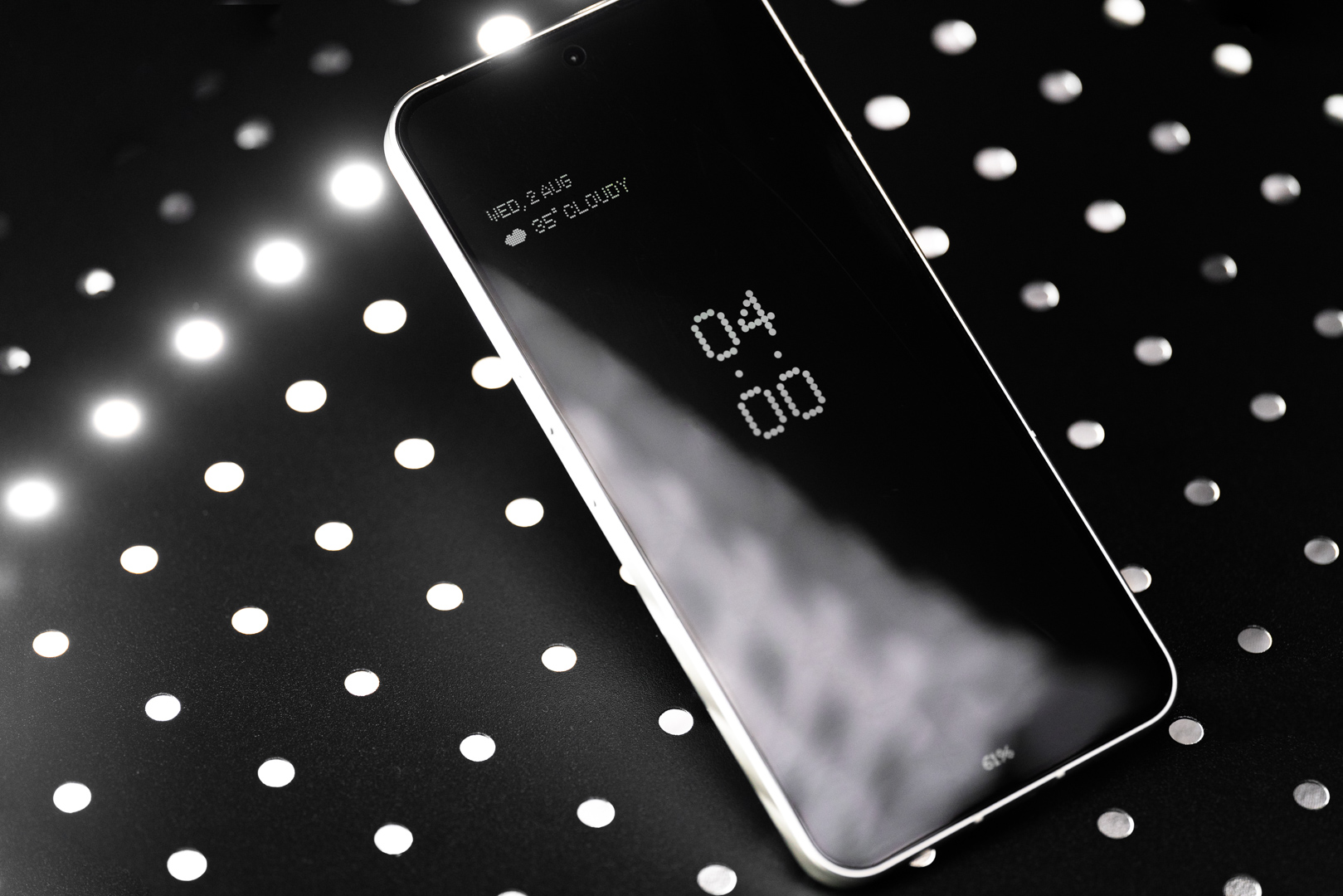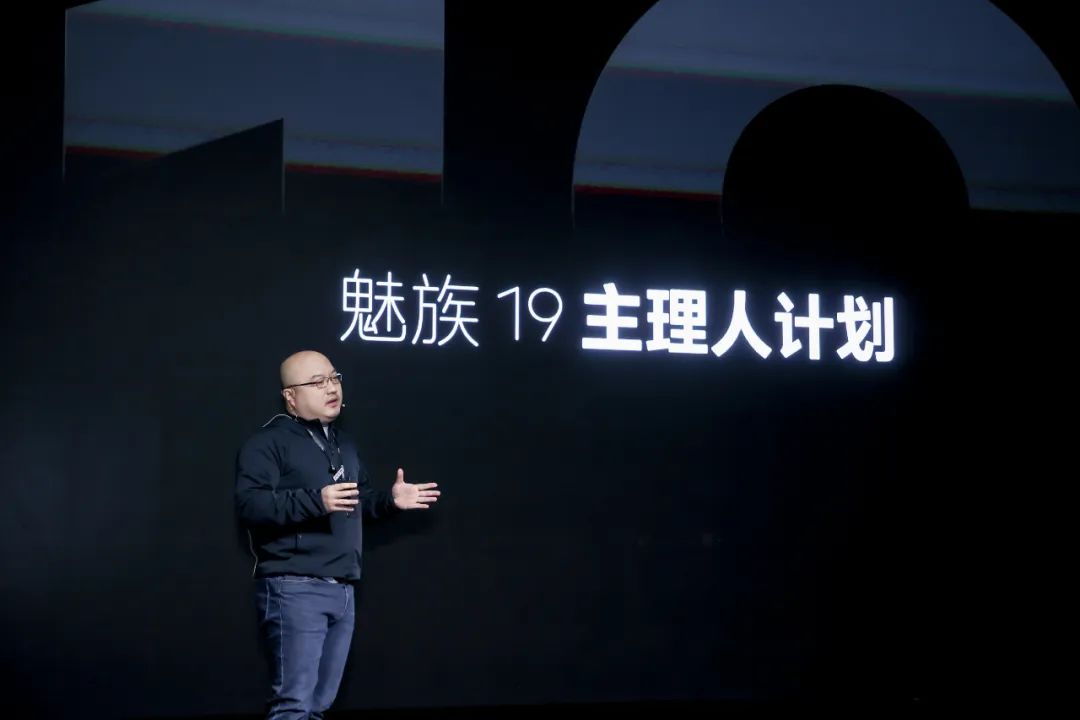How far is this dream of user-designed mobile phones from us?
Are you satisfied with the mobile phone you are using now? If a mobile phone brand gave you an opportunity to participate in mobile phone design, would you be willing to leave your own creativity? I believe many people have fantasized about this. After all, how cool it is to use a mobile phone designed by yourself.
Now the opportunity has come. Recently, Nothing company launched a "community customization plan", inviting community members to jointly design a special edition mobile phone Nothing Phone (2a). Nothing Phone (2a) is the company's first mid-range model and was officially released in overseas markets in March this year.

Photo source: Lei Technology
Friends who follow Lei Technology may You will have a certain impression of the company Nothing. Previously, Lei Technology has made special reports and discussions on many mobile phones of Nothing. It has also reviewed and experienced the Nothing Phone (2) model. Its unique back cover design has attracted many people from Lei Technology. The editor gave an "extremely amazing" evaluation.
It is reported that the “Community Customization Plan” launched by Nothing Company will start on March 26 and last for a total of six months. During this period, Nothing will collect design proposals for the Nothing Phone (2a) special edition from the community, including four aspects: hardware, wallpaper, packaging and marketing. The winner in each aspect will have the opportunity to work directly with the Nothing team to turn the idea into a for reality.
In order, the first phase of co-creation activities will focus on hardware design. This part of the design has high requirements for the professional level of the participants. The winner will work with Nothing London Industrial The design team worked together to complete the final design of the Nothing Phone (2a) Special Edition.
The second part focuses on wallpaper design. The winning wallpaper will be pre-installed directly on the phone.

Source: Lei Technology
The third part is packaging design , how to integrate the packaging box with hardware and wallpaper design to create a unique unboxing experience will be the core of this part.
The last part is marketing creativity. When the overall design of the mobile phone is basically formed, Nothing will solicit creative marketing plans from the community. The selected participants will have the opportunity to obtain the Nothing brand and creativity. Team support to put marketing plans into practice.
This plan clarifies the timeline of four parts, which progress layer by layer, giving people the illusion of personally participating in the entire process of building a mobile phone. For users with certain professional abilities and enthusiasm for the brand, this is an excellent opportunity to express themselves. The winners of the four categories will be invited to attend the special edition mobile phone launch conference held by Nothing in London. The ultimate honor in the gaming world.
From co-creation to co-testing, mobile user participation is gradually decreasing
To be honest, when I look at The first moment I saw Nothing’s “community customization plan”, I first thought of it not as any mobile phone brand, but as the “community co-governance system” that has been ruined in the virtual currency circle. As the name suggests, "co-governance" means that all community members can participate in the decision-making of a certain virtual currency direction. If you want to be a member of the community, you must hold the corresponding virtual currency. The early "community co-governance system" was popular because it represented a consensus reached by a certain group, and they jointly decided the direction of development of things under the trend of interests.
High participation and enthusiasm are synonymous with these co-governance and co-creation communities. Similarly, mobile phone brands also need a community in which users can participate, preferably to the extent of sharing weal and woe.
In fact, similar co-creation plans have already appeared in the domestic mobile phone industry a long time ago. When talking about community co-creation, Meizu must be mentioned. As the first mobile phone brand in China to pioneer this concept, the interest communities, fan bases, and offline fan activities launched by Meizu have left a very deep impression on people. As early as 2007, Meizu had just announced that it would develop the M8 smartphone. A large number of digital enthusiasts quickly gathered on the Meizu forum to make suggestions for the development of the M8.

Photo source: Meizu
In addition, "Flyme108 Activities such as "General" and "Meizu 19 Host Plan" are also representatives of user co-creation. In particular, the "Meizu 19 Host Program" not only invites Meizu friends and digital enthusiasts to participate in product design, but also opens a Meizu creative design section to allow users to participate in the design of mobile phones. In the end, the program received 240 mobile phone design proposals.
To this day, many mobile phone brands such as Xiaomi, Huawei, OPPO, and vivo are also launching internal and public beta tests of mobile phone systems in their respective mobile phone communities. The main purpose is to allow interested users to experience the new system version first and provide feedback on bugs and unreasonable settings encountered during the experience. Although it is also a good way to enhance user participation, compared with co-creating mobile phones, it may be more appropriate to call them testers.
Of course, mobile phone brands occasionally hold different types of theme design competitions, but in terms of user participation, they are obviously not comparable to community co-creation.
Community co-creation is a utopia for mobile phone users
Looking back at the "Community Customization Plan" launched by Nothing Company, Nothing co-founder and CEO Carl Pei said he believes that in the future, the boundaries between companies and communities will gradually disappear and eventually merge into one. In the future, the community may be able to contribute code to Nothing OS or even co-create other products with Nothing.
I have to say that this is a pretty grand vision. It looks great for communities and mobile phone brands to co-create products, but is community co-creation of mobile phones really a sustainable way?

Source: Xiaomi Community
The advantages of community co-creation are not It goes without saying that it can greatly enhance the stickiness of brand fans and make these groups keep pace with the brand. The brand eliminates the complicated steps of market research, directly understands the real needs of core user groups, and creates mobile phones that users truly like.
Although the advantages are particularly attractive, the shortcomings of this model are also obvious from the attitude of mainstream mobile phone brands towards community co-creation. The first is the issue of user professionalism. Most mobile phone users are just ordinary people who know nothing about how to design mobile phones. When mobile phone manufacturers spend a lot of manpower and material resources to collect ideas, they can only find a few usable designs among a large number of invalid designs.
From the perspective of input-output ratio, perhaps mobile phone manufacturers will have more obvious results if they spend this part of the cost on market research and recruiting professional mobile phone engineers.
Secondly, the vast majority of mobile phone users are not loyal users of a certain brand. On the contrary, mobile phone users jump back and forth between different brands based on mobile phone performance, image, signal, battery life and other factors, which is more in line with the laws of the mobile phone market. This is also the main reason why the current mobile phone market is highly involution.
Maintaining community co-creation requires continuous costs. It is not only the maintenance of community user relationships, but also cross-border communication with creative providers. The requirements for mobile phone brands are far greater than It’s expensive to design a mobile phone yourself. From the perspective of the long-term development of mobile phone brands, communities, as the main place for communication with users, are indispensable. Community co-creation may be more like the utopian vision of loyal brand users, which is short-lived and unsustainable.
Write at the end
Mobile phone brands want to hear clearly the actual needs of each mobile phone user, mobile phone Users also want mobile phone brands to hear their feedback. Building a bridge of direct communication between brands and users, allowing users to use the most satisfactory mobile phone products, is the essence of community co-creation.

Source: Lei Technology
From a personal perspective Judging from this, I admire Nothing’s courage to launch a “community customization plan” because this is the brand’s emphasis on fans. In the history of mobile phones, there are brands like Meizu that actively embrace their fans, and there are also brands like Xiaomi, Huawei, OPPO, vivo, Honor, etc. that are willing to listen to user feedback. Their ultimate goal is to build a better mobile phone.
# Community co-creation is very beautiful, but in the end it may only exist in a niche and cannot truly become mainstream. In comparison, exploring more forms of co-testing may be the best way for mobile phone brands to communicate with users at this stage. However, the first phase of Nothing’s “community customization plan” has not really started yet. Let us continue to pay attention to the progress of this plan and look forward to the official release of the Nothing Phone (2a) special edition.

The above is the detailed content of How far is this dream of user-designed mobile phones from us?. For more information, please follow other related articles on the PHP Chinese website!

Hot AI Tools

Undresser.AI Undress
AI-powered app for creating realistic nude photos

AI Clothes Remover
Online AI tool for removing clothes from photos.

Undress AI Tool
Undress images for free

Clothoff.io
AI clothes remover

Video Face Swap
Swap faces in any video effortlessly with our completely free AI face swap tool!

Hot Article

Hot Tools

Notepad++7.3.1
Easy-to-use and free code editor

SublimeText3 Chinese version
Chinese version, very easy to use

Zend Studio 13.0.1
Powerful PHP integrated development environment

Dreamweaver CS6
Visual web development tools

SublimeText3 Mac version
God-level code editing software (SublimeText3)

Hot Topics
 How to create a project in git
Apr 17, 2025 pm 04:18 PM
How to create a project in git
Apr 17, 2025 pm 04:18 PM
Creating a project using Git requires the following steps: 1. Install the official website of Git to download the corresponding version of Git and install it; 2. Initialize the project to create a repository using git init; 3. Add files to add files to the temporary storage area with git add; 4. Submit changes to commit and add instructions; 5. Push changes to push them with git push; 6. Pull changes to use git pull to get the latest changes from the remote repository using git pull.
 Top 10 Digital Virtual Currency Apps Rankings: Top 10 Digital Currency Exchanges in Currency Circle Trading
Apr 22, 2025 pm 03:00 PM
Top 10 Digital Virtual Currency Apps Rankings: Top 10 Digital Currency Exchanges in Currency Circle Trading
Apr 22, 2025 pm 03:00 PM
The top ten digital virtual currency apps are: 1. OKX, 2. Binance, 3. gate.io, 4. Coinbase, 5. Kraken, 6. Huobi, 7. KuCoin, 8. Bitfinex, 9. Bitstamp, 10. Poloniex. These exchanges are selected based on factors such as transaction volume, user experience and security, and all provide a variety of digital currency trading services and an efficient trading experience.
 What are the digital currency trading platforms in 2025? The latest rankings of the top ten digital currency apps
Apr 22, 2025 pm 03:09 PM
What are the digital currency trading platforms in 2025? The latest rankings of the top ten digital currency apps
Apr 22, 2025 pm 03:09 PM
Recommended apps for the top ten virtual currency viewing platforms: 1. OKX, 2. Binance, 3. Gate.io, 4. Huobi, 5. Coinbase, 6. Kraken, 7. Bitfinex, 8. KuCoin, 9. Bybit, 10. Bitstamp, these platforms provide real-time market trends, technical analysis tools and user-friendly interfaces to help investors make effective market analysis and trading decisions.
 What is a quantum chain? What are the quantum chain transactions?
Apr 21, 2025 pm 11:51 PM
What is a quantum chain? What are the quantum chain transactions?
Apr 21, 2025 pm 11:51 PM
Quantum Chain (Qtum) is an open source decentralized smart contract platform and value transmission protocol. 1. Technical features: BIP-compatible POS smart contract platform, combining the advantages of Bitcoin and Ethereum, introduces off-chain factors and enhances the flexibility of consensus mechanisms. 2. Design principle: realize on-chain and off-chain data interaction through main control contracts, be compatible with different blockchain technologies, flexible consensus mechanisms, and consider industry compliance. 3. Team and Development: An international team led by Shuai Chu, 80% of the quantum coins are used in the community, and 20% rewards the team and investors. Quantum chains are traded on Binance, Gate.io, OKX, Bithumb and Matcha exchanges.
 The latest updates to the oldest virtual currency rankings
Apr 22, 2025 am 07:18 AM
The latest updates to the oldest virtual currency rankings
Apr 22, 2025 am 07:18 AM
The ranking of virtual currencies’ “oldest” is as follows: 1. Bitcoin (BTC), issued on January 3, 2009, is the first decentralized digital currency. 2. Litecoin (LTC), released on October 7, 2011, is known as the "lightweight version of Bitcoin". 3. Ripple (XRP), issued in 2011, is designed for cross-border payments. 4. Dogecoin (DOGE), issued on December 6, 2013, is a "meme coin" based on the Litecoin code. 5. Ethereum (ETH), released on July 30, 2015, is the first platform to support smart contracts. 6. Tether (USDT), issued in 2014, is the first stablecoin to be anchored to the US dollar 1:1. 7. ADA,
 Recommend several apps to buy mainstream coins in 2025 latest release
Apr 21, 2025 pm 11:54 PM
Recommend several apps to buy mainstream coins in 2025 latest release
Apr 21, 2025 pm 11:54 PM
APP software that can purchase mainstream coins includes: 1. Binance, the world's leading, large transaction volume and fast speed; 2. OKX, innovative products, low fees, high security; 3. Gate.io, a variety of assets and trading options, focusing on security; 4. Huobi (HTX), low fees, good user experience; 5. Coinbase, suitable for novices, high security; 6. Kraken, safe and compliant, providing a variety of services; 7. KuCoin, low fees, suitable for professional traders; 8. Gemini, emphasizes compliance, and provides custodial services; 9. Crypto.com, providing a variety of offers and services; 10. Bitstamp, an old exchange, strong liquidity,
 Quantum Chain Exchange Ranking Top 10 Recommended (Updated in 2025)
Apr 21, 2025 pm 11:48 PM
Quantum Chain Exchange Ranking Top 10 Recommended (Updated in 2025)
Apr 21, 2025 pm 11:48 PM
Quantum chains can be traded on the following exchanges: 1. Binance: One of the world's largest exchanges, with large trading volume, rich currency and high security. 2. Sesame Open Door (Gate.io): a large exchange, providing a variety of digital currency transactions, with good trading depth. 3. Ouyi (OKX): operated by OK Group, with strong comprehensive strength, large transaction volume, and complete safety measures. 4. Bitget: Fast development, provides quantum chain transactions, and improves security. 5. Bithumb: operated in Japan, supports transactions of multiple mainstream virtual currencies, and is safe and reliable. 6. Matcha Exchange: a well-known exchange with a friendly interface and supports quantum chain trading. 7. Huobi: a large exchange that provides quantum chain trading,
 Top 10 digital currency exchange apps Recommended by the top ten digital currency exchanges
Apr 22, 2025 pm 03:12 PM
Top 10 digital currency exchange apps Recommended by the top ten digital currency exchanges
Apr 22, 2025 pm 03:12 PM
The top ten digital currency exchange apps are ranked: 1. Binance, 2. OKX, 3. gate.io, 4. Coinbase, 5. Kraken, 6. Huobi, 7. KuCoin, 8. Bybit, 9. Bitfinex, 10. Bittrex, these platforms were selected for their excellent performance in user experience, security, handling fees and transaction volume.






